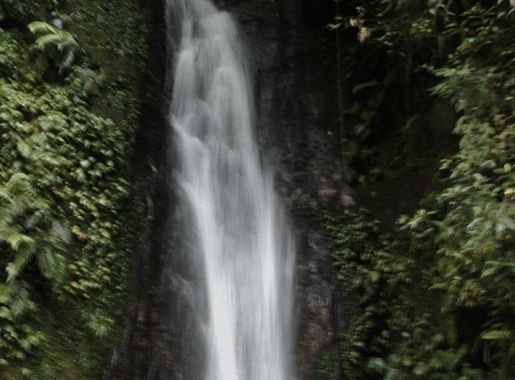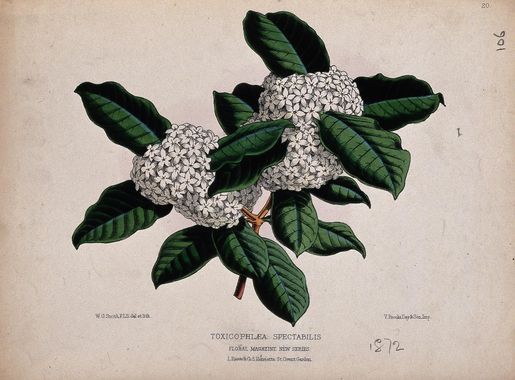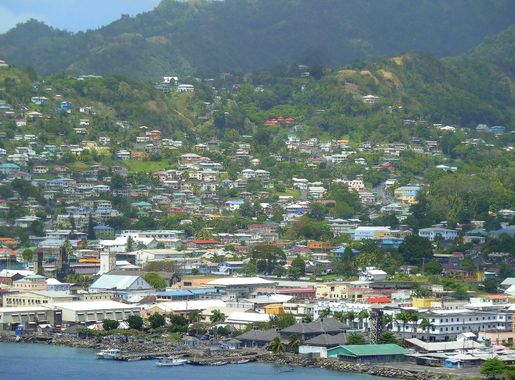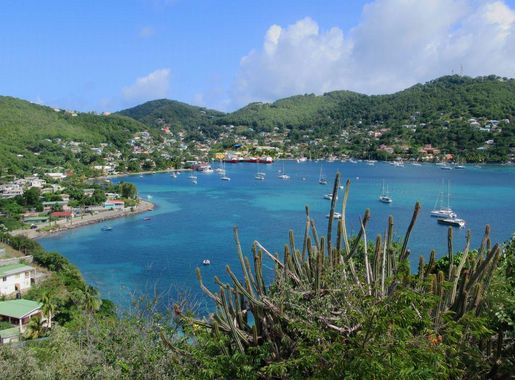
La Soufriere: The Majestic Volcano of Saint Vincent
Discover the awe-inspiring La Soufriere volcano in Saint Vincent, a natural wonder offering thrilling hikes, breathtaking views, and rich biodiversity.
La Soufriere is the highest peak in Saint Vincent and the Grenadines, standing at an impressive 1,234 meters. This active volcano is a central part of the island's history and culture. It last erupted in 2021, adding a fresh layer of fascination for both scientists and tourists alike. The hike to the summit of La Soufriere is an adventure in itself. The trail leads through lush rainforests, past bubbling streams, and across rugged terrain. The journey offers stunning views of the island and the Caribbean Sea. At the top, the crater lake and the panoramic views are truly breathtaking. Apart from hiking, La Soufriere is also a great spot for bird-watching. Many rare and exotic species can be spotted in the area. The volcano's unique ecosystem is home to a wide variety of flora and fauna. Whether you're an avid hiker, a nature lover, or a casual tourist, La Soufriere offers an unforgettable experience.
Local tips in La Soufriere
- Start your hike early in the morning to avoid the midday heat.
- Wear sturdy hiking boots and bring plenty of water.
- Hire a local guide for a more informative and safer experience.
- Check the weather forecast before planning your hike.
- Bring a camera to capture the stunning views from the summit.
La Soufriere: The Majestic Volcano of Saint Vincent
La Soufriere is the highest peak in Saint Vincent and the Grenadines, standing at an impressive 1,234 meters. This active volcano is a central part of the island's history and culture. It last erupted in 2021, adding a fresh layer of fascination for both scientists and tourists alike. The hike to the summit of La Soufriere is an adventure in itself. The trail leads through lush rainforests, past bubbling streams, and across rugged terrain. The journey offers stunning views of the island and the Caribbean Sea. At the top, the crater lake and the panoramic views are truly breathtaking. Apart from hiking, La Soufriere is also a great spot for bird-watching. Many rare and exotic species can be spotted in the area. The volcano's unique ecosystem is home to a wide variety of flora and fauna. Whether you're an avid hiker, a nature lover, or a casual tourist, La Soufriere offers an unforgettable experience.
When is the best time to go to La Soufriere?
Iconic landmarks you can’t miss
La Soufrière
Discover La Soufrière, St. Vincent's iconic volcano, offering breathtaking views and an unforgettable hiking experience amidst lush Caribbean landscapes.
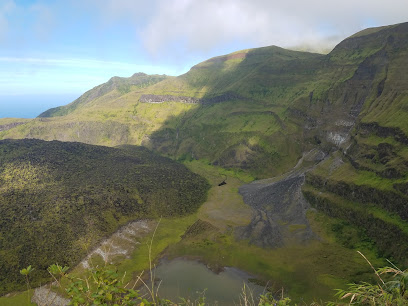
La Soufrière Volcano
Discover the breathtaking beauty and adventure of La Soufrière Volcano in Saint Vincent, a must-visit hiking destination for nature lovers and thrill-seekers.

La Soufriere Volcano
Experience the breathtaking beauty of La Soufriere Volcano, an active hiking destination offering stunning views and rich biodiversity in St. Vincent.
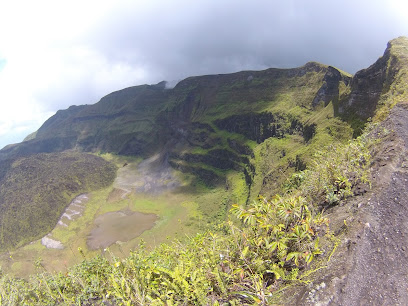
The La Soufrière National Park
Explore the stunning landscapes and rich biodiversity of La Soufrière National Park, a natural wonder in Saint Vincent and the Grenadines.
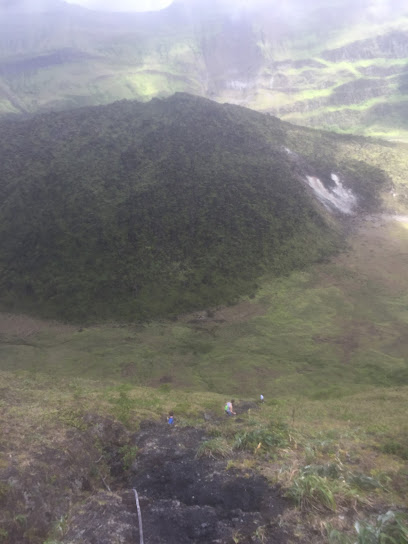
Unmissable attractions to see
Chatoyer National Park
Discover the tranquility and beauty of Chatoyer National Park, a true gem of St. Vincent with lush landscapes and diverse wildlife perfect for outdoor enthusiasts.
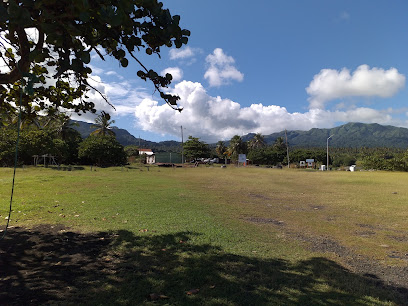
Falls Of Baleine
Explore the stunning Falls of Baleine in Wallibou, a breathtaking natural wonder perfect for nature lovers and adventure seekers.
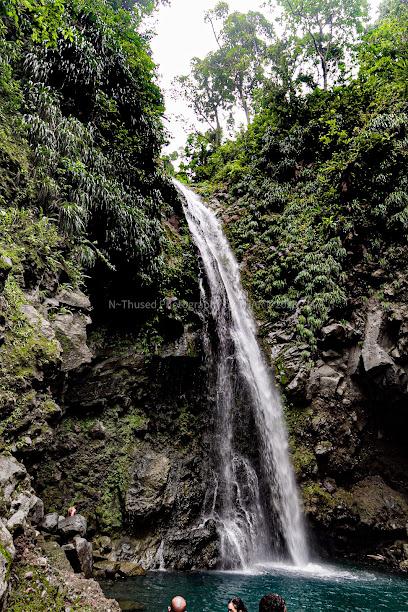
The La Soufrière National Park
Explore the breathtaking landscapes and rich biodiversity of La Soufrière National Park, a natural gem in St. Vincent and the Grenadines.
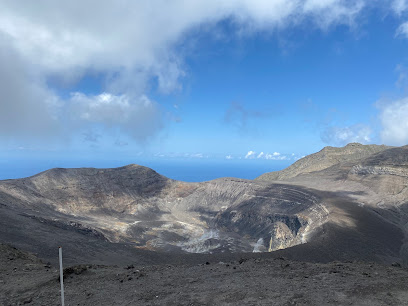
Owia Waterfall
Discover the enchanting beauty of Owia Waterfall in Saint Vincent, a perfect destination for nature lovers and adventure seekers alike.
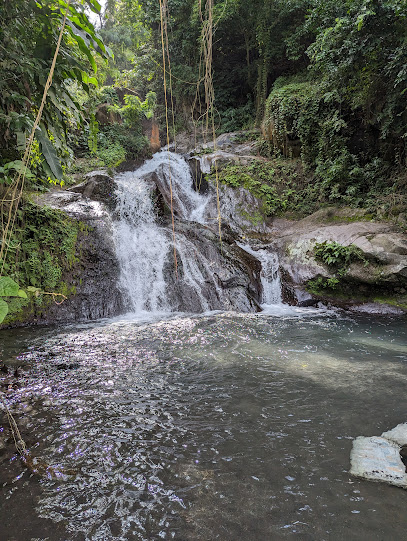
Entrance to waterfalls
Discover the natural beauty and tranquility at the Entrance to Waterfalls in Richmond, a perfect park for relaxation and exploration in nature's embrace.
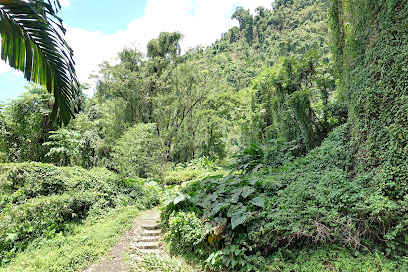
De Volet Mineral Springs
Experience the natural beauty and tranquility of De Volet Mineral Springs, a hidden gem in Wallibou perfect for hiking and relaxation.
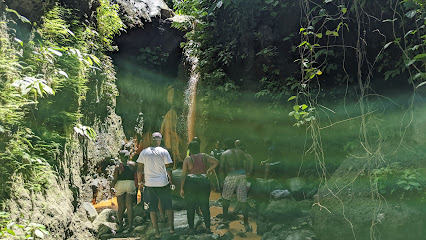
Petit Wallibou Waterfall
Experience the enchanting beauty of Petit Wallibou Waterfall, a hidden gem in Richmond that promises adventure and tranquility amidst lush landscapes.
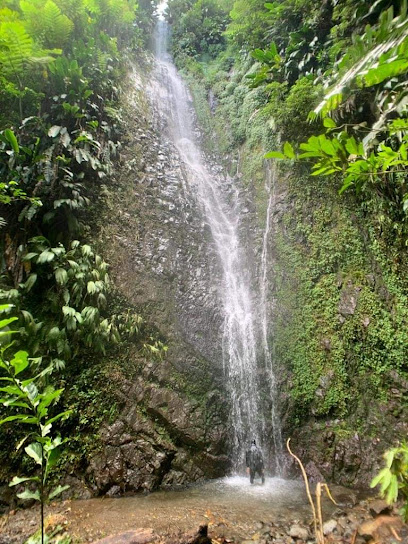
Trinity Falls
Explore Trinity Falls, a serene waterfall in Wallibou, offering breathtaking views and a peaceful escape into nature's beauty.
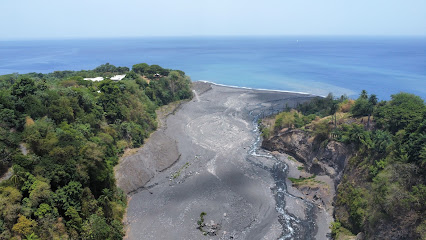
Diamond Beach
Experience the tranquility and beauty of Diamond Beach, a Caribbean paradise perfect for relaxation and adventure in Saint Vincent and the Grenadines.
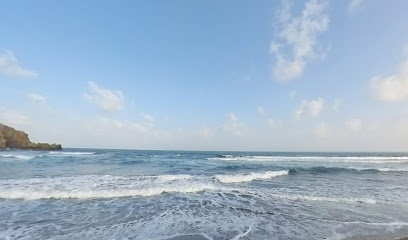
Fresh water spring trail
Explore the Fresh Water Spring Trail in New Sandy Bay Village, a tranquil haven for hikers and nature lovers seeking breathtaking views and adventure.

Jasmine Falls
Explore the breathtaking beauty of Jasmine Falls, a serene hiking area in Richmond, where nature and adventure come together in perfect harmony.
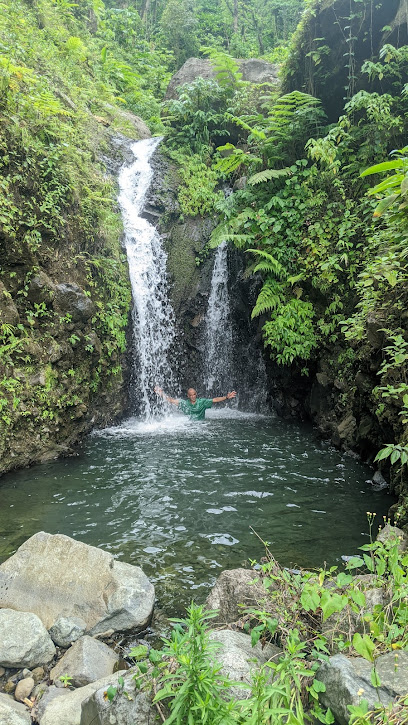
Essential places to dine
Mangoz Restaurant and Bar
Experience the best of Caribbean cuisine at Mangoz Restaurant and Bar in Villa – where flavor meets hospitality!
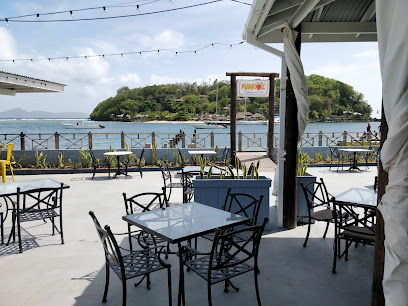
French Verandah
Discover exquisite Caribbean cuisine at French Verandah, where stunning views meet delightful flavors in Arnos Vale.
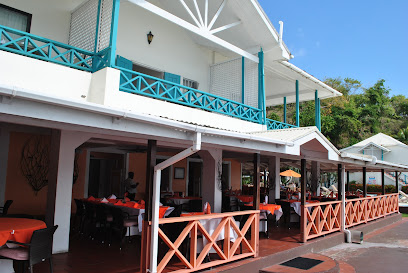
Flowt Beach Bar
Discover Flowt Beach Bar at Blue Lagoon Marina - where delicious grilled delights meet breathtaking waterfront views.
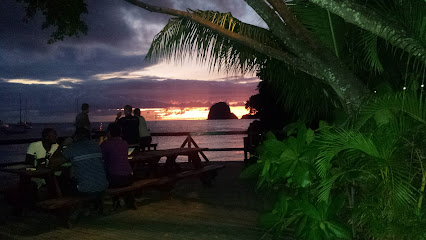
Flow Wine Bar and Kitchen
Discover Flow Wine Bar and Kitchen in Kingstown - where exquisite wines meet gourmet cuisine in an inviting atmosphere.
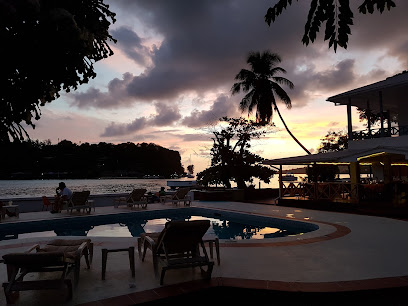
Bungalow
Experience culinary bliss at Bungalow in Villa - where local flavors meet international cuisine amidst stunning Caribbean views.
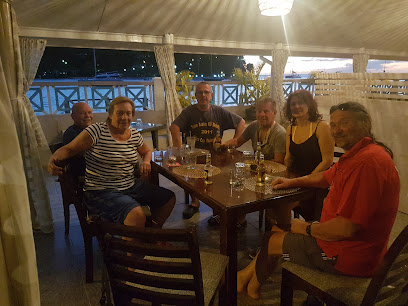
Beach Front Restaurant & Bar
Experience exquisite local cuisine and breathtaking ocean views at Beach Front Restaurant & Bar – a must-visit destination for every tourist.
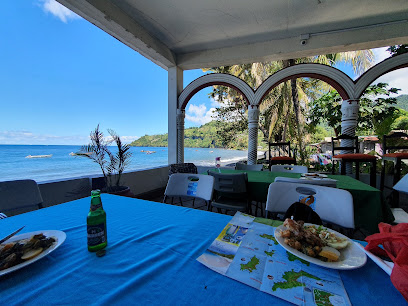
Stop Light Restaurant & Bar
Discover flavorful Caribbean cuisine at Stop Light Restaurant & Bar in Kingstown, where every meal is a celebration of local culture and taste.

The Loft Restaurant and Bar
Experience the vibrant flavors of St. Vincent at The Loft Restaurant and Bar, where culinary creativity meets local charm.
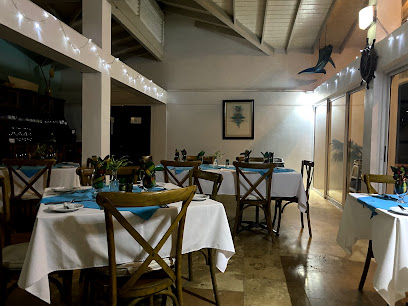
Rock-Side Cafe
Experience authentic Caribbean flavors and breathtaking coastal views at Rock-Side Cafe in Barrouallie.
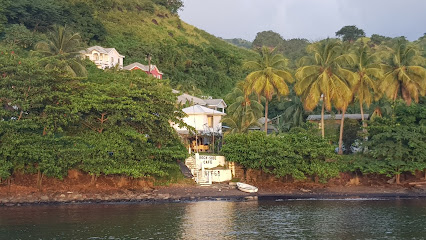
Mojito’s Restaurant & Bar
Experience the vibrant flavors of the Caribbean at Mojito's Restaurant & Bar in Charles Village - a culinary gem for all food lovers.
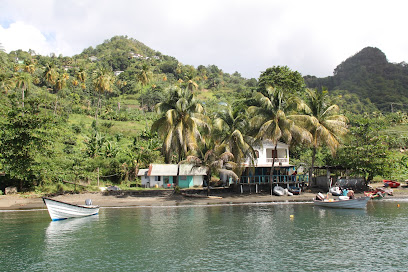
Ada Restaurant
Experience the essence of Caribbean cuisine at Ada Restaurant in Kingstown - where every meal is a celebration of flavor and hospitality.
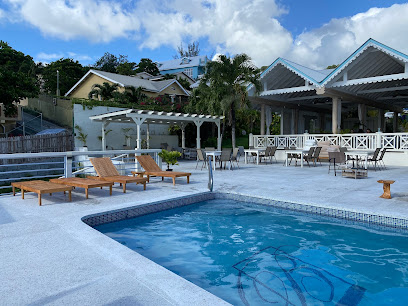
Sunset's Hideout Bar N' Grill
Discover Sunset's Hideout Bar N' Grill in Keartons - where delicious Caribbean cuisine meets breathtaking sunset views for an unforgettable dining experience.
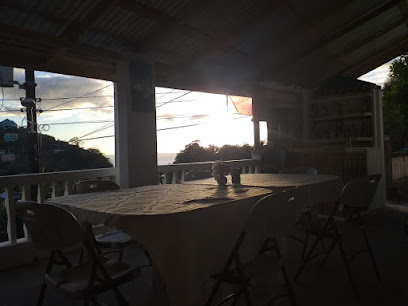
J And J FOOD GALLEY AND BAR
Experience authentic Caribbean cuisine at J And J Food Galley and Bar – where every meal tells a story of St. Vincent's rich culinary heritage.
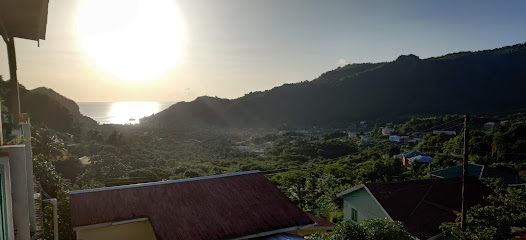
Bush Bar
Experience authentic Caribbean cuisine at Bush Bar in Pembroke - a hidden gem offering delicious dishes and a vibrant atmosphere.

Oleander
Experience culinary excellence at Oleander in Grenville - where local flavors meet international flair.
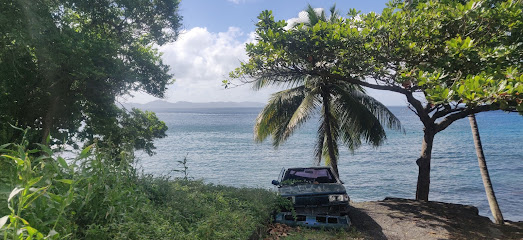
Markets, malls and hidden boutiques
#1 Women's Boutique -Miami Girl Boutique
Explore Miami Girl Boutique, Kingstown's top destination for stylish women's fashion and personalized shopping experiences.

Green Hill Shop
Explore the unique crafts and artisanal goods at Green Hill Shop, a hidden gem in Kingstown offering authentic local products.
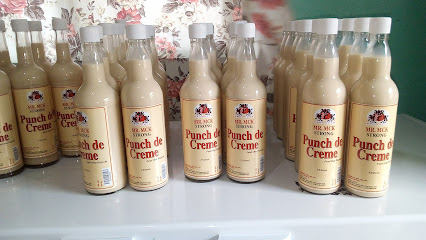
Garifuna Bakery
Experience authentic Caribbean flavors at Garifuna Bakery, where traditional recipes meet freshly baked goodness in New Sandy Bay Village.
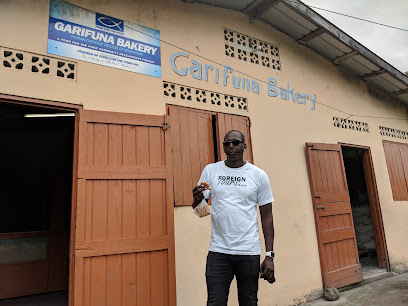
Divine SVG
Experience the vibrant local culture at Divine SVG, a charming general store in Saint Vincent offering unique crafts and essential goods for every traveler.

Samanta & Sons
Experience the vibrant fashion scene at Samanta & Sons, a top clothing store in Kingstown offering stylish attire and unique accessories.

Flash_River_side_bar_offical
Discover the sweet flavors of St. Vincent at Flash River Side Bar, a charming dessert shop in Layou with mouth-watering treats and stunning views.
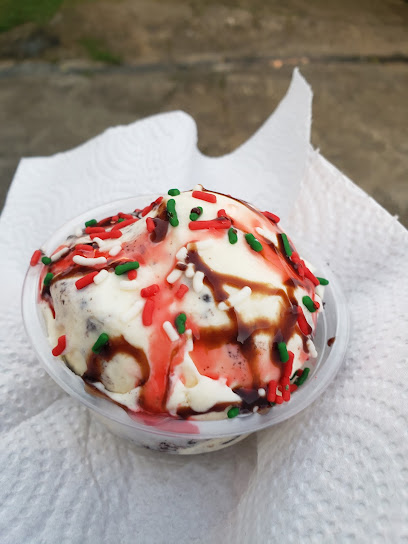
Sheridon Shop
Discover unique local goods and exceptional service at Sheridon Shop in Greiggs, the perfect spot for a memorable shopping experience.
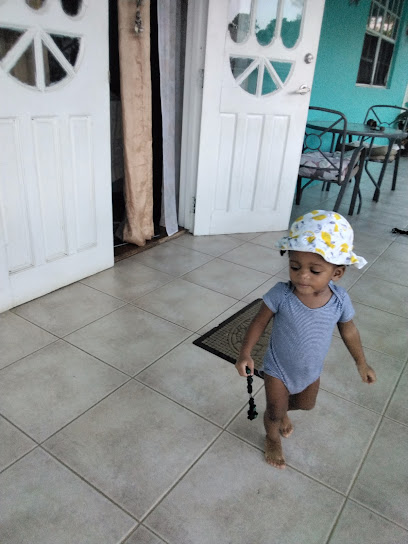
Shearman Shop
Explore Shearman Shop in Greiggs, a vibrant shopping mall offering unique local crafts and a taste of authentic Caribbean culture.

Rica's Bakery
Discover the flavors of the Caribbean at Rica's Bakery, where every cake tells a story and every bite is a journey.
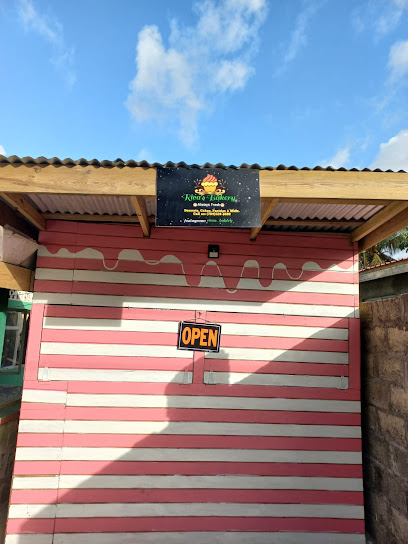
KC Mart
Explore KC Mart in St. George for an authentic taste of local culture, snacks, and essential supplies during your Caribbean adventure.

Overdose Hideout Grocery and Bar
Experience local flavors and the vibrant atmosphere at Overdose Hideout Grocery and Bar in Georgetown, your gateway to Caribbean culinary delights.
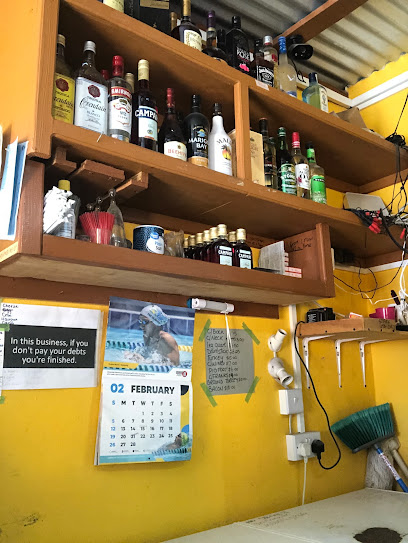
Pink diamond
Experience the elegance of the Caribbean at Pink Diamond in Owia, where exquisite jewelry meets exceptional craftsmanship.

On Point Shipping Services
Discover the essence of local fashion at On Point Shipping Services, the premier clothing store in Point, offering unique styles and exceptional service.

Ruby's world
Experience the finest ice cream at Ruby's World in Chateaubelair, where local flavors and delightful treats await every visitor.

M & J Boutique
Explore M & J Boutique in New Sandy Bay Village for a unique selection of local fashion, accessories, and an inviting shopping experience.
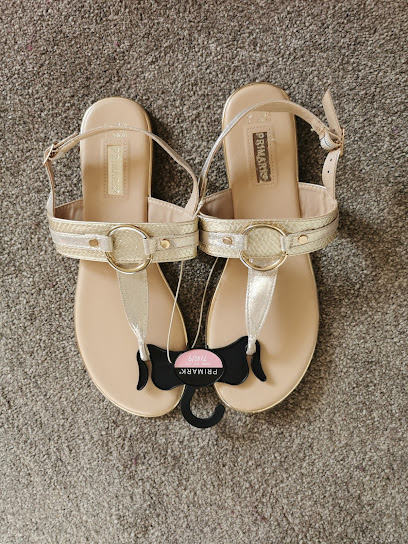
Essential bars & hidden hideouts
Mikey's Riveride Bar
Discover the vibrant atmosphere and scenic views at Mikey's Riverside Bar, where relaxation meets local culture in Mt Grenan.
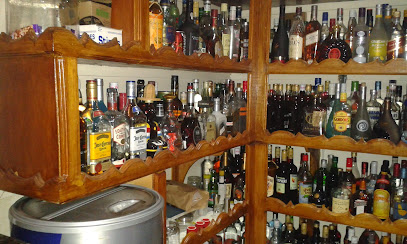
G-SPOT BAR
Experience the vibrant atmosphere and refreshing drinks at G-SPOT BAR in New Sandy Bay Village, a must-visit spot for travelers seeking fun and relaxation.
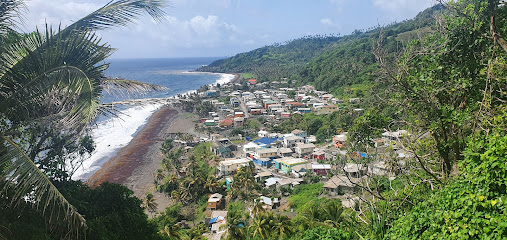
Millers Bar
Experience the lively ambiance and refreshing drinks at Millers Bar in New Sandy Bay Village, the perfect spot for relaxation and local culture.
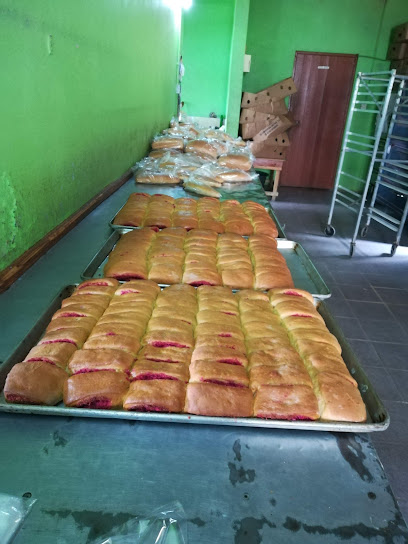
Wallo’s bar
Experience the vibrant essence of Georgetown at Wallo's Bar, where refreshing drinks and lively atmosphere await every visitor.

Cupper's bar
Experience the vibrant Caribbean nightlife at Cupper's Bar in Georgetown, where delicious cocktails and friendly locals await.
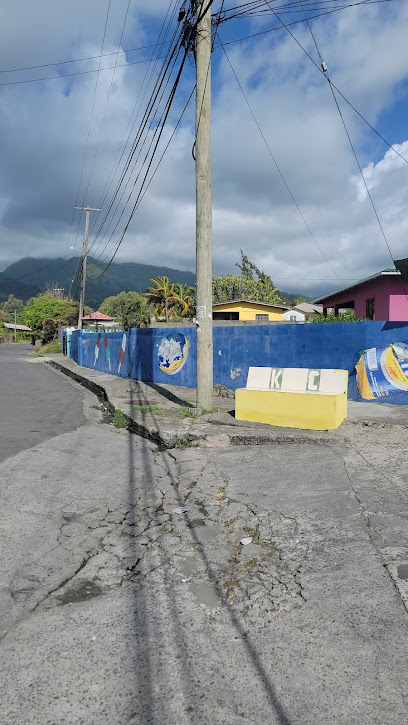
SUGAR DADDY PATIO, POOL AND BAR
Experience vibrant nightlife and relaxing poolside vibes at Sugar Daddy Patio, Pool and Bar in Mt Grenan.
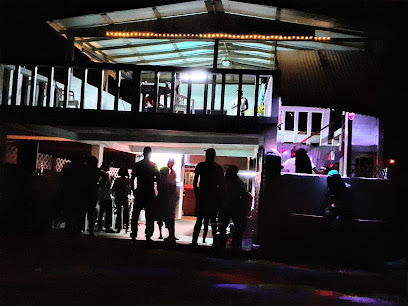
Big lion bar colonarie
Discover the lively Big Lion Bar in Byera Hill, a perfect blend of local culture, refreshing drinks, and a vibrant ambiance for all tourists.

Blue ice bar
Unwind at the Blue Ice Bar, a vibrant hotspot on Windward Highway, blending cool cocktails with an electrifying ambiance for a memorable night.

Knolly's Bar
Experience the vibrant atmosphere of Knolly's Bar in Byera Hill, where local flavors and tropical vibes come together for an unforgettable night.
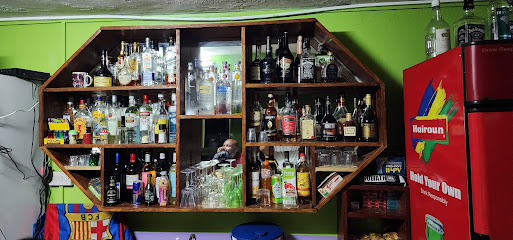
LA ROCA ️
Discover the lively ambiance and refreshing drinks at LA ROCA, Spring Village's premier bar for relaxation and fun.
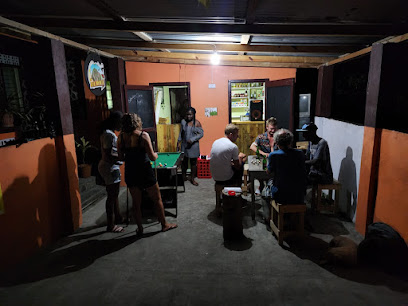
Summit bar and snackette
Experience the charm of Owia at Summit Bar and Snackette, where local flavors meet breathtaking views in a relaxed atmosphere.
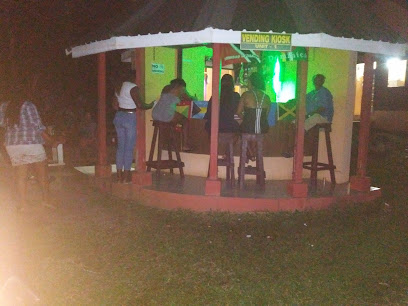
Pepper's bar
Discover the lively ambiance and refreshing drinks at Pepper's Bar on Windward Highway, a must-visit for an authentic Friendly experience.
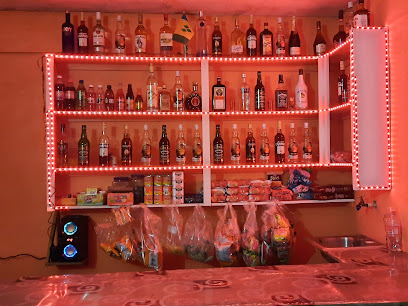
SKY LOUNGE BAR
Discover the breathtaking views and refreshing drinks at SKY LOUNGE BAR in New Sandy Bay Village, your perfect retreat.
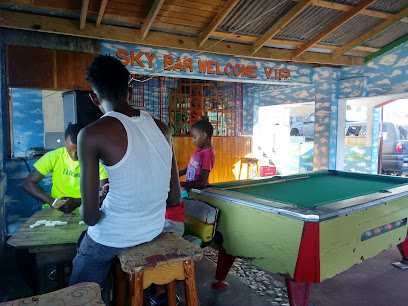
Sweetness Hideout
Experience the vibrant nightlife at Sweetness Hideout, a must-visit bar in Richmond Vale, offering refreshing drinks and a lively atmosphere.

Progressive Bar
Discover the lively nightlife at Progressive Bar in Richmond Vale, where great drinks and vibrant atmosphere await every visitor.
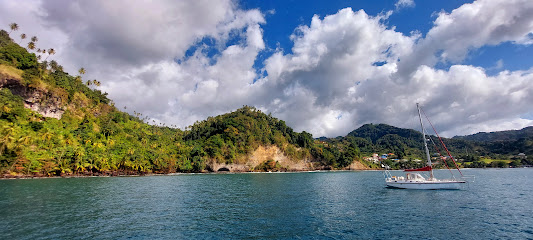
Local Phrases about La Soufriere
-
- HelloWah Gwan
[Wah Gwan] - GoodbyeLater
[Later] - YesYah man
[Yah man] - NoNah man
[Nah man] - Please/You're welcomeS'il vous plait
[See voo play] - Thank youTank yuh
[Tank yuh] - Excuse me/SorrySarry
[Sarry] - How are you?Wah yuh say?
[Wah yuh say?] - Fine. And you?Mi deh yah. An yuh?
[Mi deh yah. An yuh?] - Do you speak English?Yuh speak English?
[Yuh speak English?] - I don't understandMi nah undastan
[Mi nah undastan]
- HelloWah Gwan
-
- I'd like to see the menu, pleaseMi wah see di menu, please
[Mi wah see di menu, please] - I don't eat meatMi nuh eat meat
[Mi nuh eat meat] - Cheers!Cheers!
[Cheers!] - I would like to pay, pleaseMi wah pay, please
[Mi wah pay, please]
- I'd like to see the menu, pleaseMi wah see di menu, please
-
- Help!Help!
[Help!] - Go away!Move from yah!
[Move from yah!] - Call the Police!Call di Police!
[Call di Police!] - Call a doctor!Call a docta!
[Call a docta!] - I'm lostMi lost
[Mi lost] - I'm illMi sick
[Mi sick]
- Help!Help!
-
- I'd like to buy...Mi wah buy...
[Mi wah buy...] - I'm just lookingMi just a look
[Mi just a look] - How much is it?How much it deh?
[How much it deh?] - That's too expensiveDat too much money
[Dat too much money] - Can you lower the price?Yuh can drop di price?
[Yuh can drop di price?]
- I'd like to buy...Mi wah buy...
-
- What time is it?Wah time it be?
[Wah time it be?] - It's one o'clockIt one o'clock
[It one o'clock] - Half past (10)Haaf pass ten
[Haaf pass ten] - MorningMawnin
[Mawnin] - AfternoonAftanoon
[Aftanoon] - EveningEevinin
[Eevinin] - YesterdayYestadeh
[Yestadeh] - TodayToday
[Today] - TomorrowTamara
[Tamara] - 1One
[One] - 2Two
[Two] - 3Tree
[Tree] - 4Fo
[Fo] - 5Fi
[Fi] - 6Six
[Six] - 7Seven
[Seven] - 8Eight
[Eight] - 9Nine
[Nine] - 10Ten
[Ten]
- What time is it?Wah time it be?
-
- Where's a/the...?Wey di...
[Wey di...] - What's the address?Wah di address deh?
[Wah di address deh?] - Can you show me (on the map)?Yuh can show mi (pan di map)?
[Yuh can show mi (pan di map)?] - When's the next (bus)?When di nex (bus) deh?
[When di nex (bus) deh?] - A ticket (to ....)A ticket (to ....)
[A ticket (to ....)]
- Where's a/the...?Wey di...
History of La Soufriere
-
La Soufriere's first recorded eruption occurred in 1812, causing significant devastation. It was described by witnesses as a catastrophic event, with pyroclastic flows and ashfall that affected the entire island. This eruption led to the loss of many lives and had a lasting impact on the island's agriculture and economy.
-
The 1902 eruption of La Soufriere was one of the most catastrophic in the Caribbean's history. Occurring just hours before Martinique's Mount Pelée eruption, it decimated villages and killed over 1,600 people. The event was a stark reminder of the volcano's power, prompting significant scientific interest and the establishment of monitoring efforts.
-
In the mid-20th century, scientists began to explore La Soufriere's geothermal potential. The volcano's activity hinted at the possibility of harnessing geothermal energy. While substantial progress has yet to be made, these explorations opened up discussions about sustainable energy solutions for the island.
-
The 1979 eruption was a significant event in Saint Vincent's modern history. Unlike previous eruptions, it was well-monitored, allowing for timely evacuations that saved many lives. The eruption caused widespread ashfall, affecting agriculture and air quality, but also showcased improvements in disaster preparedness and response.
-
La Soufriere holds a special place in the culture and folklore of Saint Vincent and the Grenadines. It is often featured in local stories and legends, symbolizing both creation and destruction. The volcano's presence is a constant reminder of the island's dynamic natural environment, influencing everything from agriculture to community rituals.
-
The most recent eruption in April 2021 was a stark reminder of La Soufriere's enduring volatility. This event led to the evacuation of thousands and caused significant ashfall, disrupting daily life and agriculture. The eruption highlighted the importance of modern monitoring and international aid in mitigating the impacts of natural disasters.
La Soufriere Essentials
-
La Soufriere is located on the northern end of Saint Vincent, the main island of Saint Vincent and the Grenadines. The nearest international airport is Argyle International Airport (AIA), which has direct flights from major North American and Caribbean hubs. From the airport, you can take a taxi or rent a car to reach the base of La Soufriere. The drive typically takes around 1.5 to 2 hours. Alternatively, some tour operators offer guided trips to the volcano.
-
Public transportation options to La Soufriere include minibuses that run from the capital city, Kingstown, to areas near the volcano, such as Georgetown and Chateaubelair. Taxis are also readily available, but be sure to negotiate the fare before starting your journey. Renting a car provides flexibility, but be prepared for narrow and winding roads. For those interested in organized tours, several companies offer excursions that include transportation and a guide.
-
The official currency of Saint Vincent and the Grenadines is the Eastern Caribbean Dollar (XCD). Credit cards are widely accepted in hotels, restaurants, and larger stores, but it is advisable to carry cash, especially when visiting rural areas or smaller establishments. ATMs are available in Kingstown and other major towns, but may be scarce near La Soufriere, so plan accordingly.
-
Saint Vincent and the Grenadines is generally a safe destination, but it is important to take standard precautions. Avoid walking alone at night in unfamiliar areas and keep an eye on your belongings in crowded places. While the areas around La Soufriere are relatively safe, be cautious of natural hazards such as uneven terrain and sudden weather changes. It is wise to travel in groups and inform someone of your plans before hiking the volcano.
-
In case of emergency, dial 911 for immediate assistance. The local police and medical facilities are available, but may be limited in remote areas. It is recommended to have travel insurance that covers medical emergencies and evacuation. For minor health issues, carry a basic first aid kit, as pharmacies may not be readily accessible near La Soufriere.
-
Fashion: Do wear comfortable and sturdy footwear for hiking. Avoid wearing flip-flops or sandals. Dress in layers as the weather can change rapidly. Religion: Do respect local customs and traditions. Avoid wearing revealing clothing in religious or conservative areas. Public Transport: Do be respectful and courteous to drivers and fellow passengers. Don't eat or drink on public transport. Greetings: Do greet people with a smile and a friendly 'Good morning' or 'Good afternoon.' Shaking hands is also common. Eating & Drinking: Do try local delicacies and accept food offerings graciously. Don't refuse hospitality, as it is considered impolite.
-
To experience La Soufriere like a local, consider hiring a local guide who can share insights about the area's history and natural features. Visit nearby villages to buy fresh produce and local goods. Engage with residents; they are often friendly and willing to share stories and recommendations. Don't miss the opportunity to explore the lush trails and scenic viewpoints that offer breathtaking views of the island.
Nearby Cities to La Soufriere
-
Things To Do in Chateaubelair
-
Things To Do in Barrouallie
-
Things To Do in Kingstown
-
Things To Do in Bequia
-
Things To Do in Port Elizabeth
-
Things To Do in Vieux Fort
-
Things To Do in Mustique
-
Things To Do in Laborie
-
Things To Do in Choiseul
-
Things To Do in Malgretoute
-
Things To Do in Soufrière
-
Things To Do in Micoud
-
Things To Do in Canaries
-
Things To Do in Praslin
-
Things To Do in Canouan


